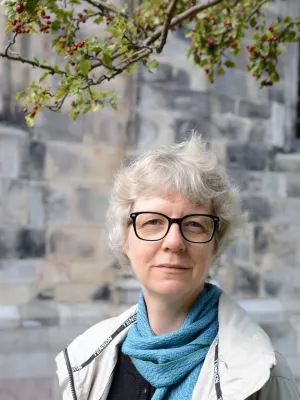
Sofia Feltzing
Professor of astronomy

The ELT-MOS (MOSAIC) : Towards the construction phase
Author
Summary, in English
When combined with the huge collecting area of the ELT, MOSAIC will be the most effective and flexible Multi-Object Spectrograph (MOS) facility in the world, having both a high multiplex and a multi-Integral Field Unit (Multi-IFU) capability. It will be the fastest way to spectroscopically follow-up the faintest sources, probing the reionisation epoch, as well as evaluating the evolution of the dwarf mass function over most of the age of the Universe. MOSAIC will be world-leading in generating an inventory of both the dark matter (from realistic rotation curves with MOAO fed NIR IFUs) and the cool to warm-hot gas phases in z=3.5 galactic haloes (with visible wavelenth IFUs). Galactic archaeology and the first massive black holes are additional targets for which MOSAIC will also be revolutionary. MOAO and accurate sky subtraction with fibres have now been demonstrated on sky, removing all low Technical Readiness Level (TRL) items from the instrument. A prompt implementation of MOSAIC is feasible, and indeed could increase the robustness and reduce risk on the ELT, since it does not require diffraction limited adaptive optics performance. Science programmes and survey strategies are currently being investigated by the Consortium, which is also hoping to welcome a few new partners in the next two years.
Department/s
- Lund Observatory - Has been reorganised
Publishing year
2018-07-06
Language
English
Publication/Series
Ground-based and Airborne Instrumentation for Astronomy VII
Volume
10702
Document type
Conference paper
Publisher
SPIE
Topic
- Astronomy, Astrophysics and Cosmology
Keywords
- Adaptive Optics
- Multi-Object
- Optical Fibres
- Spectrograph
Conference name
Ground-based and Airborne Instrumentation for Astronomy VII 2018
Conference date
2018-06-10 - 2018-06-14
Conference place
Austin, United States
Status
Published
ISBN/ISSN/Other
- ISBN: 9781510619579

